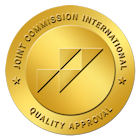Approximately 8% of Americans have a drinking problem. Unfortunately, far fewer seek treatment. For some, it’s the fear of detox. A closer look at an alcohol withdrawal timeline shows that at a good-quality facility, overcoming an alcohol use disorder is possible.
5: Signs of Alcoholism that Tell if You Need Help
An inability to control when and how much you drink are two telltale signs of a drinking problem. Constant cravings for the drug and partaking of the substance even when it causes problems are two more. Hiding your use is the most dangerous sign. It can take many forms including hiding alcohol in other containers such as water bottles or soda cans.
3: Stages of an Alcohol Withdrawal Timeline
The process of withdrawal has characteristic symptoms that span 72 hours. They start as early as six hours after the last drink. Of course, the onset of withdrawal symptoms depends in large part on your overall health and daily drinking habits. It’s unsafe to withdraw by yourself at home, and you should contact a detox facility for help with the process.
6 to 24 Hours: Onset of Common Withdrawal Symptoms
Individuals who seek out alcoholism treatment deal with one or more of these symptoms. They include trembling of the hands, headaches, and the onset of gastrointestinal upset. In a medically assisted setting, you may receive IV infusions to prevent dehydration. Some people also experience hallucinations that may be auditory or visual.
24 to 48 Hours: Onset of Seizure Activity
Not everyone going through alcohol withdrawal experiences seizures. That said, it’s possible to suffer from them even if you’ve never had one before. You may get confused and become irritable because you have a difficult time orienting yourself. When you withdraw at a detox facility, therapists monitor your vitals to ensure safety.
48 to 72 Hours: Possibility of Delirium Tremens
Only about 3 to 5% of people who detox from alcohol experience delirium tremens. This condition refers to an increase in seizure activity, fever, and hallucinations. There are treatment options that can prevent the development of this condition. At a facility, experts in the field will treat your withdrawal symptoms proactively to avoid this problem.
Getting Help for an Alcohol Problem Today
You don’t have to be uncomfortable during withdrawal. At Crestview Recovery, we handle your alcohol addiction rehab. To get you ready, we refer you to a detox facility we work with. Call us today at 866-252-0531 to learn more about your options and to schedule an appointment.
































